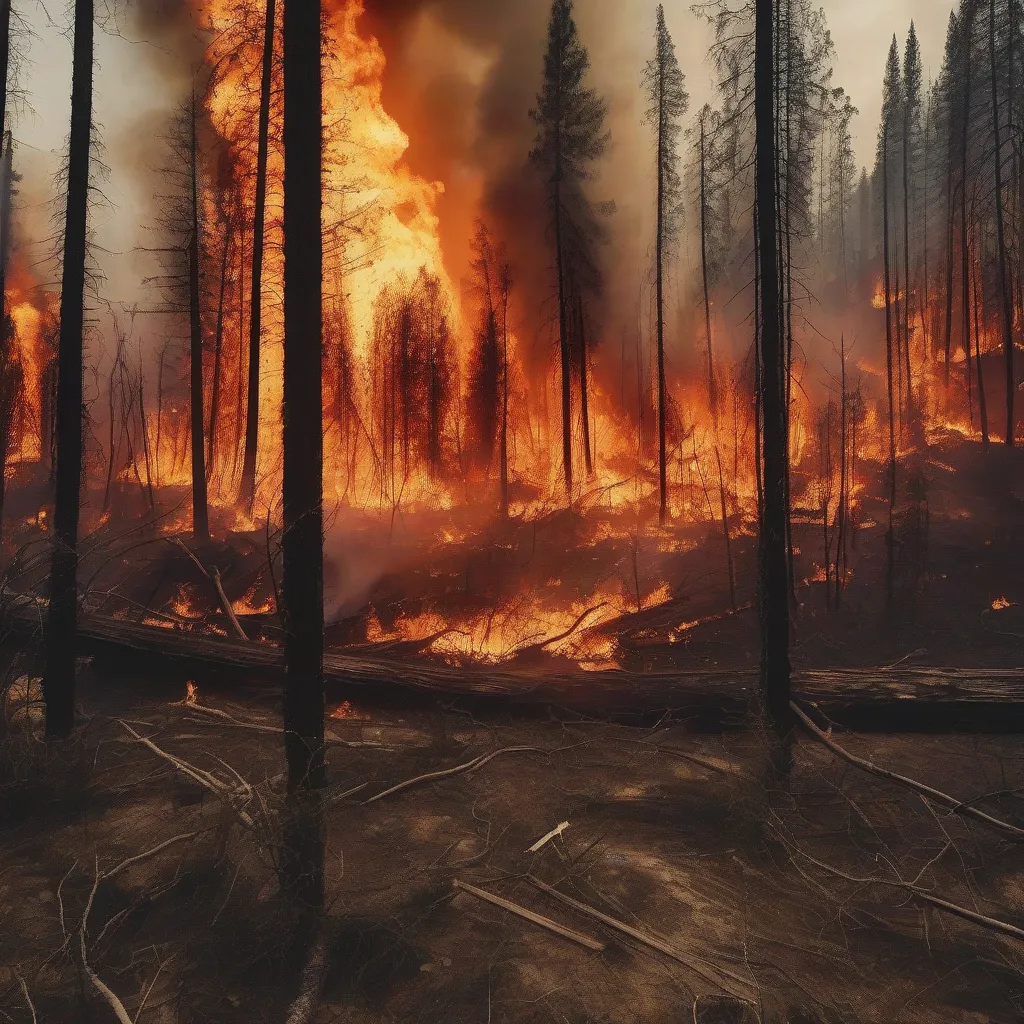Imagine yourself embarking on a scenic hike through Yosemite National Park, the air filled with the scent of pine needles and the sound of birdsong. Suddenly, you smell smoke, a faint hint of danger carried on the breeze. As you round a bend, you see it: a wall of flames, advancing with a speed that seems impossible. This, unfortunately, is the reality of wildfires, a force of nature both awe-inspiring and terrifying. But just How Fast Can A Forest Fire Travel?
The Speed of Destruction: Factors at Play
While it might seem like a simple question, the speed of a forest fire is influenced by a complex interplay of factors. Think of it like driving a car – you wouldn’t expect the same speed driving through downtown Los Angeles as you would on an open highway in the Nevada desert. Similarly, a wildfire’s speed depends on:
- Wind Speed and Direction: Wind acts like a giant bellows, providing oxygen and pushing the flames forward. The stronger the wind, the faster the fire spreads. Just like a tailwind propels a sailboat, wind behind a fire can send it racing across a landscape at alarming speeds.
- Fuel Type: Different types of vegetation burn at different rates. Dry grasses ignite easily and burn rapidly, while dense forests with moist undergrowth burn slower but with greater intensity.
- Terrain: Fire travels uphill faster than downhill, as heat rises and preheats the fuel above. Steep slopes also create drafts that accelerate the fire’s spread. Imagine a fire burning up the iconic Half Dome in Yosemite – a terrifying thought!
- Weather Conditions: Low humidity, high temperatures, and drought conditions create the perfect storm for rapid fire spread. Just like how a hot, dry day can make you crave a refreshing drink, these conditions make forests more susceptible to burning.
A Raging Inferno: Wildfire Speed Range
While each wildfire is unique, understanding the potential speed is crucial for safety and preparedness.
- Crawling Blaze: In some cases, fires might move as slowly as a few feet per hour, especially if they encounter natural barriers like rivers or rocky terrain.
- Rapid Advance: Under ideal conditions, however, wildfires can surge forward at speeds of up to 14 miles per hour – that’s faster than the average human can run!
- Extreme Cases: In extreme circumstances with strong winds and dry fuels, wildfires have been known to travel at speeds exceeding 20 miles per hour, consuming everything in their path.
Planning Your Escape: The Importance of Awareness
While the thought of a wildfire racing towards you is frightening, understanding the factors that influence their speed can be lifesaving.
- Check Fire Danger Ratings: Before heading out on hikes or camping trips, always consult local authorities for fire danger ratings. Just like you wouldn’t want to be caught in a blizzard without proper gear, being aware of fire risks is crucial.
- Stay Informed: Pay attention to weather forecasts and be aware of any Red Flag Warnings, which indicate high fire danger.
- Have an Evacuation Plan: Familiarize yourself with evacuation routes and have a plan in place, especially if you live in a fire-prone area.
 Wildfire Raging Through Forest
Wildfire Raging Through Forest
Travelcar.edu.vn: Your Guide to Safe and Informed Travel
Planning a trip to a beautiful natural destination? Travelcar.edu.vn provides resources and information to help you stay safe and informed, ensuring your adventures are both enjoyable and responsible. For instance, if you’re interested in exploring the digital world, you can check out our guide on “How Many Blocks Do You Travel in the Nether”. Remember, being prepared is the key to a successful and safe journey.
 Family Planning Trip with Travelcar Website
Family Planning Trip with Travelcar Website
FAQs: Addressing Your Wildfire Concerns
- Q: Can I outrun a wildfire? A: It is generally not advisable to try and outrun a wildfire. They can move incredibly fast and unpredictably. Evacuating early is crucial.
- Q: What should I do if I encounter a wildfire while driving? A: If you encounter a wildfire while driving, do not attempt to drive through it. Turn around and seek alternative routes.
- Q: How can I help prevent wildfires? A: Be responsible with fire, especially during dry conditions. Follow all campfire regulations and ensure cigarettes are properly extinguished.
Respecting Nature’s Power: A Shared Responsibility
Wildfires are a natural part of many ecosystems, but human actions can significantly impact their frequency and intensity. By understanding the forces at play and practicing responsible behavior, we can all play a part in protecting our forests and communities. Remember, when it comes to wildfires, awareness and prevention are key.